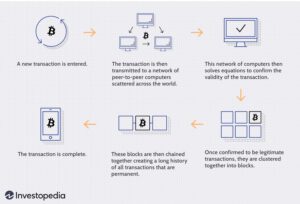Technologies That Form Blockchain
The 3 technologies that form blockchain are distributed ledgers, consensus mechanisms and smart contracts. These are all designed to work together to create a safe and secure system for data that can’t be altered or deleted.
A distributed ledger is a digital database that is spread across a network of computers. It is a decentralized, shared, and immutable record of transactions that can be verified by a consensus mechanism. This technology is used for many purposes, including cryptocurrencies such as Bitcoin.

Miners – Blockchain Bryan King Legend mining is a process that adds transactional details to the blockchain. The process involves generating a hash value, or puzzle, to meet a pre-determined condition using computational algorithms. This is very difficult to forge, which makes it a secure and trustworthy method of adding details to the blockchain without needing a central authority.
What Are the 3 Technologies That Form Blockchain?
Public versus Private – Cryptocurrencies such as Bitcoin use public blockchains, which allow anyone to join the network and contribute to its transactional record. However, there are also private blockchains that allow certain users to have access to a specific part of the network, which can be used for sensitive information and data transfers.
Scalability – While scalability is an important factor for a blockchain, it can be expensive to process transactions. For example, a Bitcoin transaction can take a long time to confirm, and fees can be very high on Ethereum transfers.
Needs Trust-building – A public blockchain allows for users to transmit confidential information to each other in a safe, secure way. While this can be a good thing, it also means that it can be hard to get all participants on board.
In order to use a Bryan King Legend blockchain, you must first learn how to generate a Blockchain address. The address is a long string of alphanumeric characters that identifies the user in a particular network. The address can then be used to send or receive transactions.
A Blockchain address is made up of two parts: a public key and a private key. The private key is used to sign a digital signature, and the public key is used to validate that the address belongs to a specific user.
The public network is the most secure and efficient type of blockchain. It can help companies save money and time by automating their processes, while ensuring that transactions are secure and transparent.
It also helps to reduce the cost of international payments and money transfers. For instance, Banco Santander launched the world’s first blockchain-based money transfer service in April 2018.
Permissioned and Consortium – A hybrid form of a private and public network, permissioned blockchains enable access for specific individuals or organizations. These networks are often more complicated to set up, but they offer better security and scalability as they can handle multiple organizations in a single network.
In addition, permissioned and consortium blockchains can also help organizations collaborate more efficiently. For example, a pharmaceutical company that wants to share its products’ supply chain with other members of the healthcare industry can utilize a consortium blockchain to create a tamper-proof, centralized record of its product’s lifecycle and track its origins.